|
Books Should Be Free Loyal Books Free Public Domain Audiobooks & eBook Downloads |
|
|
Books Should Be Free Loyal Books Free Public Domain Audiobooks & eBook Downloads |
|
Adventure Books |
|---|
|
Book type:
Sort by:
View by:
|
By: H. G. Wells (1866-1946) | |
|---|---|
 The War in the Air
The War in the Air
War in the Air was written during a prolific time in H. G. Wells's writing career. Having withdrawn from British politics to spend more time on his own ideas, he published twelve books between 1901 and 1911, including this one. while many British citizens were surprised by the advent of World War I, Wells had already written prophetically about such a conflict. War in the Air predicted use of airplanes in modern war. | |
 In the Days of the Comet
In the Days of the Comet
William ("Willie") is a student living in the British town of Clayton. As a Socialist, he tries to move power from the upper class to the working class. Interestingly, in a fictitious confrontation Britain declares war on Germany. Willie falls in love with Nettie, but when she elopes with an upper-class man, Willie resolves to kill them both. Throughout the novel there is present in the sky a large comet which gives off a green glow. As Willie prepares to shoot the lovers, two battleships appear and begin shelling the coast, causing Willie to nearly lose his targets... | |
By: Sax Rohmer (1883-1959) | |
|---|---|
 The Return of Dr. Fu-Manchu
The Return of Dr. Fu-Manchu
Burmese Commisioner Nayland Smith and his faithful friend Dr Petrie continue their fight against the evil genius of Dr Fu-Manchu when they seek to save the good doctor’s lost love and protect the British Empire from disaster when their malignant enemy returns to England. | |
 The Hand of Fu-Manchu
The Hand of Fu-Manchu
Further adventures of Nayland Smith and Doctor Petrie as they continue their battles against the evil genius, Dr Fu-Manchu. | |
 The Insidious Dr. Fu-Manchu
The Insidious Dr. Fu-Manchu
The first of the Fu-Manchu novels this story follows the two characters who are set against the machinations of the insidious doctor. | |
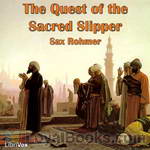 The Quest of the Sacred Slipper
The Quest of the Sacred Slipper
Cavanagh becomes involved in the adventurous search for a precious relic in the mysterious East. (Introduction by Laineyben) | |
By: William Shuler Harris (b. 1865) | |
|---|---|
 Life in a Thousand Worlds
Life in a Thousand Worlds
A jolly romp, which could be perhaps be described as Gulliver’s Travels Through Our Solar System and Beyond, as written by a great admirer of C. S. Lewis, on a rainy Sunday afternoon, after one too many mugs of cocoa. Includes some thought on alien philosophies and how to apply them to moral and social problems here on Planet Earth. | |
By: Theodore Roosevelt | |
|---|---|
 Through the Brazilian Wilderness
Through the Brazilian Wilderness
Roosevelt’s popular book Through the Brazilian Wilderness describes his expedition into the Brazilian jungle in 1913 as a member of the Roosevelt-Rondon Scientific Expedition co-named after its leader, Brazilian explorer Cândido Rondon. The book describes all of the scientific discovery, scenic tropical vistas and exotic flora, fauna and wild life experienced on the expedition. One goal of the expedition was to find the headwaters of the Rio da Duvida, the River of Doubt, and trace it north to the Madeira and thence to the Amazon River... | |
By: Waldemar Bonsels (1880-1952) | |
|---|---|
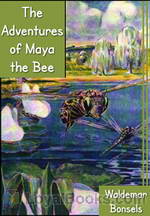 The Adventures of Maya the Bee
The Adventures of Maya the Bee
A little bee is born in a large and busy hive. At that time, the hive is going through a period of unrest and there are fears that it will become subdivided into separate colonies. The little new-born, Maya, is under the care of a strict but loving teacher. One day, driven by curiosity and rebellion, Maya escapes from the safe environs of the hive and flies into the forest. Here, she encounters all sorts of interesting, exciting, frightening and funny things. The Adventures of Maya the Bee is the story of the intriguing days that follow... | |
By: Joseph E. Badger, Jr (1848-1909) | |
|---|---|
 The Lost City
The Lost City
Bruno and Waldo Gillespie are orphaned brothers living with the extremely eccentric Professor Phaeton Featherwit. One day they set off in one of the professor’s machines to investigate a tornado at close range and accidentally get sucked into it! They are then transported by the tornado and find themselves in a barren, uncharted wasteland wherein lies a city– a long lost Aztec city! Find out what happens next to the brothers and the professor in this harrowing and exhilarating adventure! | |
By: Frank Pinkerton | |
|---|---|
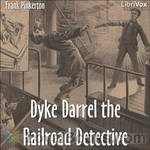 Dyke Darrel the Railroad Detective
Dyke Darrel the Railroad Detective
Dyke Darrel investigates an audacious train robbery that included the murder of a friend, and embarks on a man-hunt. High Victorian serial melodrama at its best! | |
By: Frederick Marryat (1792-1848) | |
|---|---|
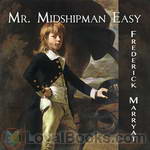 Mr. Midshipman Easy
Mr. Midshipman Easy
One of the first novel-length pieces of nautical fiction, MR. MIDSHIPMAN EASY (1836) is a funny and easygoing account of the adventures of Jack Easy, a son of privilege who joins the Royal Navy. The work begins as a satire on Jack’s attachment to “the rights of man” that may try the listener’s patience. But despair not, for the story soon settles down as the philosophical midshipman begins his many triumphs over bullies, foul weather, and various damned foreigners of murderous intent.Caveat audiens: This novel employs racial/ethnic epithets and religious stereotypes, as well as taking a rather sunny view of supply-side economics... | |
 Masterman Ready The Wreck of the "Pacific"
Masterman Ready The Wreck of the "Pacific"
| |
 The Mission; or Scenes in Africa
The Mission; or Scenes in Africa
| |
 The Pacha of Many Tales
The Pacha of Many Tales
| |
 Travels and Adventures of Monsieur Violet
Travels and Adventures of Monsieur Violet
| |
 Snarleyyow
Snarleyyow
This is a quite amusing nautical tale of the British Navy of the around the year 1700. While, as with much early 'humor', it is somewhat heavy-handed, the sympathies of the author are clear and good, and cruelty is often averted by good fortune or background characters. First published under the title 'The Dog Fiend', the primary characters are an evil captain of a cutter and his dog. The dog seems indestructible, as is the poor cabin boy who is the butt of the captain's ill humor, and who often is chewed on by the dog... | |
 Masterman Ready
Masterman Ready
| |
 The Travels and Adventures of Monsieur Violet in California, Sonora, and Western Texas
The Travels and Adventures of Monsieur Violet in California, Sonora, and Western Texas
| |
 The Pacha of Many Tales
The Pacha of Many Tales
| |
 The Mission
The Mission
| |
By: Plague Ship (1912-2005) | |
|---|---|
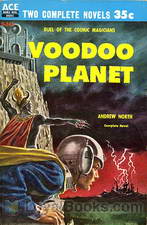 Voodoo Planet
Voodoo Planet
The sequel to Plague Ship, Voodoo Planet finds the Solar Queen banned from trade and starting her supposed quiet two-year stint as an interstellar mail carrier. But instead her crew accepts a visit to the safari planet of Khatka, where they find themselves caught in a battle between the forces of reason and the powers of Khatka’s mind-controlling wizard. | |
By: Nat Love (1854-1921) | |
|---|---|
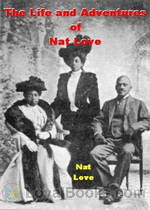 The Life and Adventures of Nat Love, Also Known As Deadwood Dick
The Life and Adventures of Nat Love, Also Known As Deadwood Dick
Nat Love was born a slave, emancipated into abject poverty, grew up riding the range as a cowboy and spent his maturity riding the rails as a Pullman Porter. For me, the most amazing thing about him is that despite the circumstances of his life, which included being owned like a farm animal solely because of the color of his skin and spending later decades living and working as an equal with white coworkers, he was an unrepentant racist! Convinced that the only good Indian was a dead one, and that... | |
By: Frank L. Packard (1877-1942) | |
|---|---|
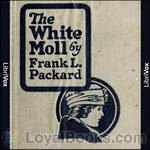 The White Moll
The White Moll
Frank Lucius Packard (February 2, 1877 – February 17, 1942) born in Montreal, Quebec, was a Canadian novelist. Packard is credited with bridging the gap from the “cozy” style mysteries to the more gritty, hard-boiled style of such writers as Dashiell Hammet and Raymond Chandler. Packard also wrote a series of novels, beginning in 1917, featuring Jimmie Dale. A wealthy playboy by day, at night, Jimmie becomes a crimefighter “The Gray Seal” complete with mask and secret hide-out, “The Sanctuary”... | |
By: Henry Fielding (1707-1754) | |
|---|---|
 Journal of a Voyage to Lisbon
Journal of a Voyage to Lisbon
Sailing voyage from England to Portugal in the mid Eighteenth Century, by one of the premier humorists, satirists, novelists and playwrights of his age. It was to be his last work, as his failing health proved unable to persevere much longer after the voyage. | |
By: William Morris (1834-1896) | |
|---|---|
 The Well at the World's End, Book 1: The Road unto Love
The Well at the World's End, Book 1: The Road unto Love
The Well at World's End is thought to be one of the first examples of an entirely fictional fantasy world, and has greatly influenced later fantasy writers such as C.S. Lewis and J.R.R. Tolkien. The book follows the travels of Ralph, a prince of a tiny country, as he disobeys his fathers wishes and runs away from home to adventure in the world, and seek out the fabled Well at World's End, said to grant eternal youth to those who drink from it. | |
By: Ernest William Hornung (1866-1921) | |
|---|---|
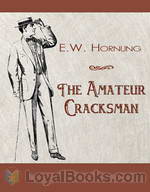 The Amateur Cracksman
The Amateur Cracksman
“I’d tasted blood, and it was all over with me. Why should I work when I could steal? Why settle down to some humdrum uncongenial billet, when excitement, romance, danger and a decent living were all going begging together” – A. J. Raffles, The Ides of March. | |
By: William Clark Russell (1844-1911) | |
|---|---|
 The Frozen Pirate
The Frozen Pirate
Sailing adventure with storms, icebergs, shipwrecks, treasure, and the reawakening of a pirate frozen in suspended animation for nearly fifty years | |
By: William Dean Howells (1837-1920) | |
|---|---|
 Indian Summer
Indian Summer
In his novel Indian Summer, William Dean Howells presents a mellow but realistic story that has the complete feel of that delightful time of the year, although the plot actually spans several seasons. The Indian summer aspect applies to a sophisticated gentleman, Theodore Colville, who has just entered his middle years as he returns to a scene, Florence, Italy, that played an important part in his early manhood. It was here twenty years earlier that he first fell in love, seemingly successfully until a sudden and harsh rejection... | |
By: Mary Godolphin (1781-1864) | |
|---|---|
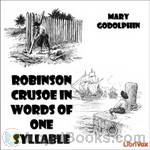 Robinson Crusoe in Words of One Syllable
Robinson Crusoe in Words of One Syllable
Mary Godolphin was the pseudonym of Lucy Aikin who undertook translating great literature into single-syllable words so that young readers could enjoy plots that were considerably more interesting than, say, the McGuffey readers of the 1880’s or the “Dick and Jane” primers of the 1950s (still around today as “decodable readers” in elementary schools). She produced this volume based on Daniel Defoe’s most famous work, considered by many to be the first English novel (1719). She also rendered Bunyan’s Pilgrim’s Progress and Wyss’ Swiss Family Robinson, which she translated as well. | |
By: L. Frank Baum (1856-1919) | |
|---|---|
 Aunt Jane's Nieces at Work
Aunt Jane's Nieces at Work
The novel carries forward the continuing story of the three cousins Louise Merrick, Beth De Graf, and Patsy Doyle, and their circle. The title is somewhat misleading; it could more accurately have been called Aunt Jane's Nieces in Politics. (Uncle John Merrick tells his nieces that politics is "work," which yields the title.)The story begins three days after the end of the previous book, Aunt Jane's Nieces at Millville; the freckled and red-haired Patsy still sports a sunburn from her summer in the Adirondacks... | |
 Aunt Jane's Nieces In The Red Cross
Aunt Jane's Nieces In The Red Cross
The 10th and final book in the series for adolescent girls sees two of the three cousins react to atrocities in World War I by volunteering in the Red Cross. Written under the pseudonym of Edith Van Dyne, this is the 1915 version, which reflects United States' neutrality. A later version, published in 1918, differed significantly to reflect changes in the position of the United States. | |
 Policeman Bluejay
Policeman Bluejay
This is another "TWINKLE TALE" from Mr. Baum (written under the pen name Laura Bancroft) and celebrates the further adventures of Twinkle and Chubbins as they magically become child-larks and live the exciting, and often dangerous, life of birds in the forest. | |
 Aunt Jane's Nieces In Society
Aunt Jane's Nieces In Society
Written under pseudonym of Edith Van Dyne. The story continues the adventures of three cousins, Louise, Patsy and Beth,with their debuts in society and the appearance of suitors, one of whom is rejected and kidnaps Louise. | |
By: E. E. Smith (1890-1965) | |
|---|---|
 Skylark Three
Skylark Three
This is a sequel to The Skylark of Space. The novel concerns Richard Seaton and his allies who have encounters with aliens while fighting DuQuesne and the Fenachrone.. | |
By: Bret Harte (1836-1902) | |
|---|---|
 Mrs. Skagg's Husbands and Other Stories
Mrs. Skagg's Husbands and Other Stories
A collection of short stories set in the American West at the end of the 19th century. | |
By: William Harrison Ainsworth (1805-1882) | |
|---|---|
 Rookwood
Rookwood
A rich and complex Gothic-Romance centring on the murky deeds of an ancient family. It is a wonderfully atmospheric piece that combines narrative, poetry, song, and descriptive writing to great effect. The character of Dick Turpin that we know today – the dashing highwaymen and unmatched horseman – can be said to stem directly from this novel, as the most famous part of the book (often published on its own in the past), Turpin’s Ride To York, is devoted to him. Although seemingly little known to a modern audience, Ainsworth’s ‘Rookwood’ gave the world the image of the highwayman with which we are all so familiar. | |
 Windsor Castle, Book 1
Windsor Castle, Book 1
Book 1 - Ann Boleyn. The focus of the novels is on the events surrounding Henry VIII's replacing Catherine of Aragon with Anne Boleyn as his wife. During Henry's pursuit of Boleyn, the novel describes other couples, including the Earl of Surrey and Lady Elizabeth Fitzgerald, a match Henry does not support. However, some of the individuals oppose Henry and his desires for Boleyn, including Thomas Wyat who wants her for himself and Cardinal Wolsey, who uses his own daughter, Mabel Lyndwood, to lure Henry away from Boleyn... | |
By: Richard Jefferies (1848-1887) | |
|---|---|
 After London, or Wild England
After London, or Wild England
First published in 1885, After London, or Wild England is considered to be one of the earliest instances of post-apocalyptic fiction, describing the effects of an unspecified catastrophe that dramatically changes the face of England and its population. Divided into two parts, the first depicts the fall of civilization, as society reverts to its more primitive roots, while the second part is set years after the apocalyptic event and examines the evident changes in both natural scenery and social structure... | |
By: Ann Radcliffe (1764-1823) | |
|---|---|
 A Sicilian Romance
A Sicilian Romance
A Sicilian Romance is a Gothic novel by Ann Radcliffe. It was her second published work, and was first published anonymously in 1790. The plot concerns the turbulent history of the fallen aristocrats of the house of Mazzini, on the northern shore of Sicily, as related by a tourist who becomes intrigued by the stories of a monk he meets in the ruins of their doomed castle. The introduction to the 'Worlds Classics' edition notes that in this novel "Ann Radcliffe began to forge the unique mixture of the psychology of terror and poetic description that would make her the great exemplar of the Gothic novel, and the idol of the Romantics"... | |
By: Giacomo Casanova (1725-1798) | |
|---|---|
 The Memoirs of Jacques Casanova
The Memoirs of Jacques Casanova
This is the first of five volumes. – Giacomo Casanova (1725 in Venice – 1798 in Dux, Bohemia, now Duchcov, Czech Republic) was a famous Venetian adventurer, writer, and womanizer. He used charm, guile, threats, intimidation, and aggression, when necessary, to conquer women, sometimes leaving behind children or debt. In his autobiography Histoire de ma vie (Story of My Life), regarded as one of the most authentic sources of the customs and norms of European social life during the 18th century, he mentions 122 women with whom he had sex... | |
By: Robert Barr (1850-1912) | |
|---|---|
 The Triumphs of Eugene Valmont
The Triumphs of Eugene Valmont
Short stories by a colleague of Jerome K. Jerome, and friend of Sir Arthur Conan Doyle. Barr probably wrote the first parody of Sherlock Holmes (included in this collection). He co-edited “The Idler” with Jerome. [written by Czechchris] | |
 In a Steamer Chair and Other Stories
In a Steamer Chair and Other Stories
Thirteen short stories by one of the most famous writers in his day. Robert Barr was a British Canadian short story writer and novelist, born in Glasgow, Scotland. In London of the 1890s Barr became a more prolific author - publishing a book a year - and was familiar with many of the best selling authors of his day, including Bret Harte and Stephen Crane. Most of his literary output was of the crime genre, then quite in vogue. When Arthur Conan Doyle's Sherlock Holmes stories were becoming well known,... | |
By: Henry Kuttner (1915-1958) | |
|---|---|
 The Ego Machine
The Ego Machine
Celebrated playwright Nicholas Martin didn’t read the small print in his Hollywood options contract. Now he’s facing five years of servitude to a conceited director named Raoul St. Cyr, who’s taken a thoughtful play about Portuguese fishermen and added dancing mermaids. When it seems the plot has changed to include a robot from the future Nicholas looses all hope, but this robot may be just what he needs to win his freedom. – The Ego Machine was first published in the May, 1952 issue of Space Science Fiction magazine. | |
By: Samuel B. Allison | |
|---|---|
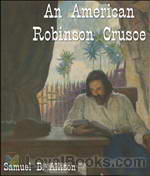 An American Robinson Crusoe
An American Robinson Crusoe
An American Robinson Crusoe is a short version of the original story. An indolent, rebellious teen goes on a marine voyage against his parents’ wishes. The ship (and all of its crew) is lost in a storm, but Robinson makes it to a deserted island. He has no tools, no weapons, but he lives for over 28 years on the island. He befriends many animals on the island and after over 20 years living solo, he is joined by a young “savage” who becomes his constant companion. The transformation from the young, lazy teen to a self-sustaining, incredibly knowledgeable adult is one of the major themes in the story. | |
By: Robert Michael Ballantyne (1825-1894) | |
|---|---|
 The Coral Island - A Tale of the Pacific Ocean
The Coral Island - A Tale of the Pacific Ocean
Ralph Rover is a traveler at heart, and has always dreamed of shipping out to the South Seas islands. He finally convinces his aging parents to let him go and find his way in the world. But the islands that Ralph finds are not as idyllic as in his dreams. Shipwrecked on a large, uninhabited island, Ralph and his fellow survivors, Jim and Peterkin, discover a world of hostile natives and villainous pirates. Danger, high adventure, and wonders of the sea greet them at every turn. When all seems lost, they find help from an unexpected source. | |
By: William Hope Hodgson (1877-1918) | |
|---|---|
 Boats of the 'Glen Carrig'
Boats of the 'Glen Carrig'
Eighteenth-century sailors adrift in a lifeboat encounter strange lands and weird creatures in their search for home. A creepy tale of nautical adventure. | |
By: James Norman Hall | |
|---|---|
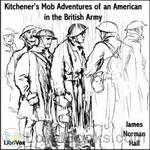 Kitchener's Mob Adventures of an American in the British Army
Kitchener's Mob Adventures of an American in the British Army
“Pvt Ryan”, “Platoon”, “A Soldier’s Home”, “Kitchener’s Mob”. These aren’t happy stories, they are about the experience of War. War at different times, and although modern warfare may be more sanitized, the adventure, the horror, the emotions don’t change. James Norman Hall has been there. He “Saw the Elephant”, and his portrayal of his WWI experience is a tribute to those ordinary people who do such extraordinary things. Those who have served will identify with at least some part if not all of this book, be it the rigors of training, the camaraderie, or possibly those memories that try as you may, you can never make go away... | |
By: John Meade Falkner (1858-1932) | |
|---|---|
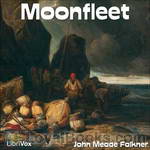 Moonfleet
Moonfleet
The novel is set in a fishing village in Dorset during the mid 18th century. The story concerns a 15 year old orphan boy, John Trenchard, who becomes friends with an older man who turns out to be the leader of a gang of smugglers.One night John chances on the smugglers’ store in the crypt beneath the church. He explores but hides behind a coffin when he hears voices. He finds a locket which contains a parchment, in the coffin belonging to Colonel Mohune. Unfortunately after the visitors leave,... | |
By: James Otis (1848-1912) | |
|---|---|
 Toby Tyler or Ten Weeks with a Circus
Toby Tyler or Ten Weeks with a Circus
Toby Tyler tells the story of a ten year-old orphan who runs away from a foster home to join the traveling circus only to discover his new employer is a cruel taskmaster. The difference between the romance of the circus from the outside and the reality as seen from the inside is graphically depicted. Toby's friend, Mr. Stubbs the chimpanzee, reinforces the consequences of what happens when one follows one's natural instincts rather than one's intellect and conscience, a central theme of the novel. | |